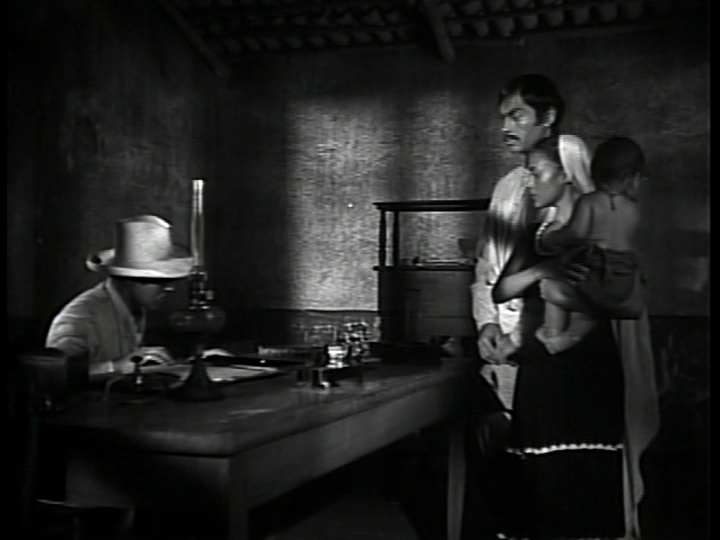Pearl, The (Perla, La) (1948)
Note: This movie was filmed simultaneously in both English and Spanish; while Peary lists the English-titled version in his GFTFF, I chose to watch the Spanish-language version with English subtitles.
“Pearls give you richness, but they also give you grief.”
|
Synopsis: |
|
Genres:
Review: … not the selfishness, paranoia, and jealousy which instantly take root once Quino dares to single himself out by finding an extraordinary pearl. Unfortunately, the film’s thematic thrust — “Don’t be greedy” — is undone by a couple of factors. First, the local doctor (overplayed as an avaricious villain by Charles Rooner) refuses to care for Coyotito when he’s bitten by a scorpion, choosing instead to stay in bed eating and fingering his coveted pearls — so we can understand why Quino is so desperate to secure the pearl (how else can he earn the money to save his son’s life?). Second, it seems this poor couple simply can’t win for losing: while they don’t want anything more than to receive money in exchange for their valued pearl, they are confronted on all sides by corruption and theft. What are Quino and Juana to do? Clearly, hopes for rising above their peasant status are unwise, given the tragic consequence that ensue from their momentary flirtation with wealth. With all that said, the on-site cinematography throughout this film is gorgeous, and it remains worth a look both for its visual beauty and its historical significance within Mexican cinema. Redeeming Qualities and Moments: Must See? Links: |




One thought on “Pearl, The (Perla, La) (1948)”
First viewing. Not must-see, but a hesitant recommendation to Steinbeck enthusiasts.
I watched this film right after reading the novella. (I watched the English-language version.) I was disappointed, overall. ~mainly because, while reading, I thought about how much like a film it seemed and how easily it might transfer to screen. (It’s certainly compact-enough for a compact feature.)
Since Steinbeck was one of the 3 screenwriters, I figured the story would remain largely intact. Well… yes and no. The film follows the story in the main – but it also adds and subtracts in what become distracting ways. (One significant way is the, as noted, “cultural intermissions” – which were probably an attempt to lighten the main story but they’re unnecessary and get in the way of the storytelling.)
DP Figueroa’s work is something of a plus. A number of shots seem to foreshadow some of the work he would accomplish in Huston’s ‘The Night of the Iguana’.
It’s a little mystifying why something that seemed so suitable for filming – as is – would be considerably altered, to lesser effect. This isn’t something I tend to default to saying, but… the book is better.